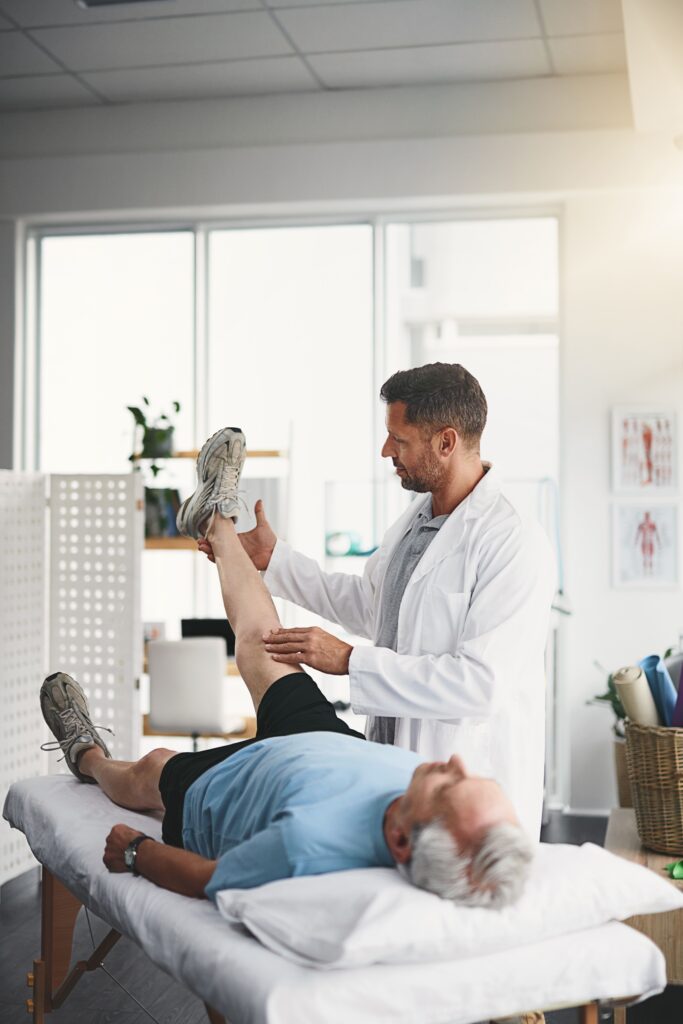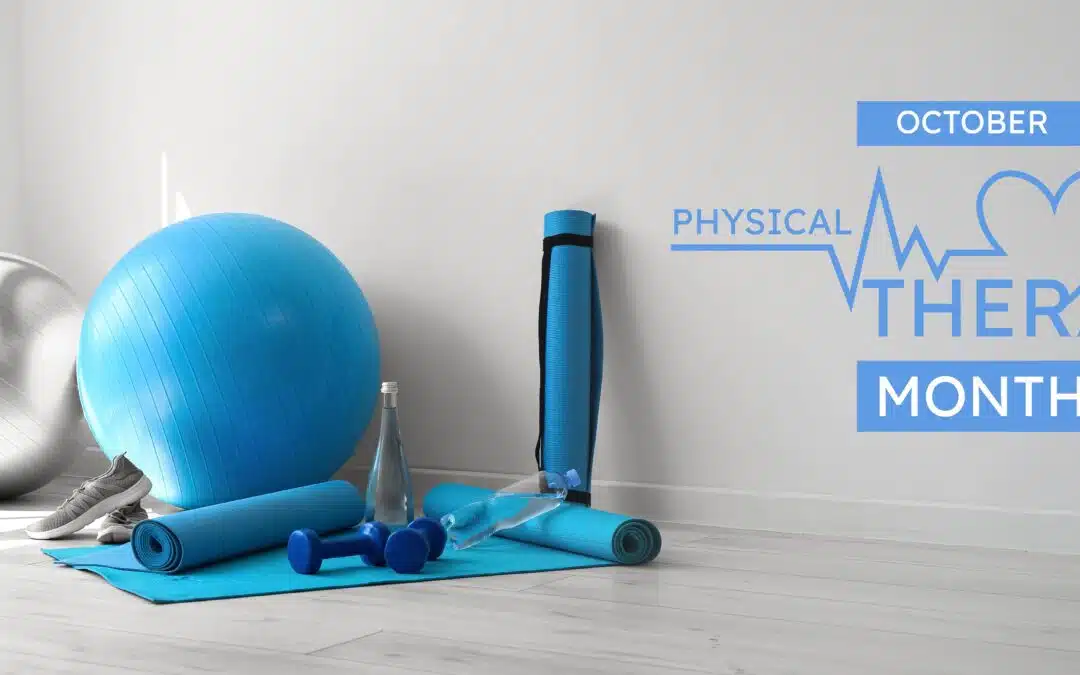Let’s Get Physical: Your Guide for Getting Back in Motion with Physical Therapy
If you’ve ever been sidelined by an injury, nagging pain, or surgery recovery, chances are someone told you to “try physical therapy.” And they weren’t wrong! Physical therapy (or PT, as it’s often called) is one of the most effective, non-invasive tools we have for improving movement, reducing pain, and getting people back to doing the things they love.
In honor of National Physical Therapy Month in October, the iSpine clinicians want to take you through a deep dive on one of our favorite services. What is physical therapy exactly? Who is it for? What happens at an appointment? Whether you’re considering PT for the first time or just want to understand how it fits into overall health and recovery, we’re going to break it all down.
What Is Physical Therapy?
At its core, physical therapy is about restoring movement and function. Physical therapists (PTs) are trained healthcare professionals who work with people of all ages to help reduce pain, prevent injury, and improve strength, flexibility, balance, and mobility.
Rather than relying on medication or surgery, PT focuses on hands-on care, targeted exercises, and education to support healing. It’s not just for athletes or post-surgical patients either—it’s useful for everything from chronic pain to posture problems to neurological conditions.
Common Issues Physical Therapy Helps With
PT is incredibly versatile. Some of the most common reasons people see a physical therapist include:
- Musculoskeletal Pain
Back pain, neck pain, shoulder pain, and joint pain (like knees or hips) are all frequent PT targets. Therapists help correct imbalances, reduce inflammation, and rebuild strength around injured or overused areas. - Injury Recovery
Sprains, strains, fractures, or overuse injuries from sports, work, or daily life often require PT for proper recovery and to avoid reinjury. - Post-Surgical Rehab
After procedures like joint replacements, ACL repairs, or spinal surgeries, PT plays a critical role in regaining mobility and strength safely. - Neurological Conditions
People with stroke, Parkinson’s disease, multiple sclerosis, or balance disorders can benefit greatly from PT focused on movement coordination and fall prevention. - Pediatric and Developmental Delays
Children with developmental delays, motor challenges, or certain conditions like cerebral palsy often work with pediatric PTs to improve coordination, strength, and mobility. - Pelvic Floor Dysfunction
This can affect both men and women and includes issues like incontinence, pelvic pain, or postpartum recovery. Pelvic floor PT is a growing specialty that addresses these concerns with specific exercises and education.
Types of Physical Therapy & Modalities

Not all physical therapy looks the same. It depends on your condition, goals, and what tools the clinic uses. Here are some of the most common PT techniques that iSpine practices:
- Manual Therapy
This includes hands-on techniques like joint mobilization, trigger point and muscle release, and stretching to improve mobility and reduce pain. - Therapeutic Exercise
Muscle re-education and strengthening is at the heart of PT. Your therapist will guide you through specific stretches, core training, or balance exercises designed just for you. iSpine utilizes MedX medical equipment to optimize our rehabilitation efforts. - Graston Technique
The Graston technique is type of instrument-assisted soft tissue mobilization used for injury recovery. Practitioners use handheld stainless steel tools to perform muscle mobilization. - Taping and Bracing
Therapists may apply kinesiology tape or recommend braces to support certain joints or encourage proper muscle activation. - Cognitive Behavioral Coaching (CBC)
Injury and pain can take a toll on a person’s life and emotions. iSpine Rehab seamlessly integrates CBC into our program to address the barriers that may slow progress. - Postural Retraining & Body Mechanics Education
This is an essential part of rehabilitation, which is used to improve endurance and comfort with daily activities.
PTs will combine these based on what your body needs most. No two treatment plans are exactly alike!
How to Choose a Physical Therapist
Not all PTs are created equal. Finding the right fit can make a big difference in how effective your treatment is—and how comfortable you feel during the process.
Here are some tips for choosing a great physical therapist:
- Check Credentials
Make sure they’re properly licensed in your state. You can usually verify this through your state licensing board. - Consider Specializations
If you have a specific issue (like pelvic floor dysfunction, neurological conditions, or sports rehab), look for someone with additional certifications or experience in that area. - Ask About Approach
Some PTs are more hands-on with manual therapy, while others focus more on guided exercises or tech-based modalities. There’s no right or wrong, but it helps to know what works best for your body. - Read Reviews or Get Referrals
Ask your doctor, chiropractor, or friends for recommendations—or check online reviews to get a feel for a PT’s reputation and personality. - Check Insurance & Accessibility
Make sure they’re in-network (if you’re using insurance), and that their hours, location, and appointment availability fit your schedule. - Consider the team and facilities
A full team of practitioners can help you find the perfect fit for support, while offering a holistic, team-based approach to your healthcare. And top-notch facilities provide the most up-to-date equipment and techniques!
What to Expect at a Physical Therapy Visit
If it’s your first time going to physical therapy, you might be wondering what’s actually going to happen. Here’s what a typical PT experience looks like:
The First Visit (Initial Evaluation)
Your PT will ask about your symptoms, medical history, lifestyle, and goals. They’ll do a physical assessment to test your strength, flexibility, posture, balance, and range of motion.
Based on what they find, they’ll create a customized treatment plan—usually outlining how many sessions you’ll need and what kinds of exercises or modalities will be used.
Follow-Up Visits
Most sessions are 30–60 minutes long. You’ll usually:
- Do a warm-up (light cardio or stretching)
- Perform guided exercises tailored to your goals
- Receive any necessary hands-on treatment (massage, mobilization, etc.)
- Get advice on what to do at home
You may be given “homework” (aka a home exercise program) to do between visits. Stick with it! These exercises are often just as important as what happens in the clinic.
Progress Tracking
Your PT will regularly reassess your progress and adjust your plan as needed. They’ll help you build toward your goals—whether that’s running again, picking up your grandkids, or just walking without pain.
The Bottom Line
Physical therapy is about more than just rehab—it’s about empowerment. It gives you tools, education, and guided movement to heal from injury, reduce chronic pain, and even prevent future problems.
So whether you’re recovering from surgery, dealing with daily aches, or looking to move better and live stronger, a physical therapist can be a key part of your healthcare team.
The best part? You don’t have to wait for things to get “bad enough.” PT is often more effective (and easier) when you start early—so don’t hesitate to set up a consultation with the iSpine Clinic rehab team today!


